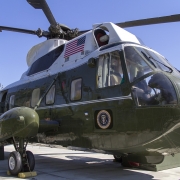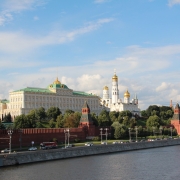What does ZOPFAN stand for?
Topic of Study [For H2 History Students]:
Paper 2: Regional Conflicts and Co-operation
Source Based Case Study
Theme III Chapter 2: ASEAN (Growth and Development of ASEAN: Building regional peace and security – relations between ASEAN and external powers)
Topic of Study [For H1 History Students]:
Essay Questions
Theme II Chapter 2: The Cold War and Southeast Asia (1945-1991): ASEAN and the Cold War (ASEAN’s responses to Cold War bipolarity)
Background: How ZOPFAN was formed?
In the early 1970s, there were several notable events that took place. First, the Western powers (USA and UK) declared their position to reduce their military presence in Southeast Asia. The British announced its withdrawal of forces in 1971. Similarly, the departure of the US troops led to the fall of Saigon in 1975 during the Second Indochina War.
As such, the Communist powers (PRC and USSR) benefited from these developments. For instance, there was increased Chinese support for the communist forces in Vietnam. Besides, the signing of the Shanghai Communique between USA and PRC expanded the latter’s opportunities to assert its influence more extensively in the region.
Some member nations of ASEAN were alarmed by the growing communist threat. During the Non-Aligned Conference of 1970, Malaysia proposed a policy of ‘neutralisation’. This meant that ASEAN should reject external interference, particularly the Cold War bipolarity, in order to protect its regional security and sovereign rights.
Although there were differing interpretations of Malaysia’s suggestions, ASEAN eventually formalized it in the concept known as the Zone of Peace, Freedom and Neutrality (ZOPFAN).
The Mechanism: How did ZOPFAN work?
On 27 November 1971, the ZOPFAN was established during the Special ASEAN Foreign Ministers Meeting in Kuala Lumpur, Malaysia. ZOPFAN functioned as a political declaration to prevent external interference and encourage regional cooperation among ASEAN members.
DO HEREBY STATE:
1. That Indonesia, Malaysia, the Philippines, Singapore and Thailand are determined to exert initially necessary efforts to secure the recognition of, and respect for, South East Asia as a Zone of Peace, Freedom and Neutrality, free from any form or manner of interference by outside Powers;
2. That South East Asian countries should make concerted efforts to broaden the areas of cooperation which would contribute to their strength, solidarity and closer relationship.
Declaration of Zone of Peace, Freedom and Neutrality (ZOPFAN), 27 Nov 1971
Arguably, the ZOPFAN was a display of regional unity as member states could come to a consensus on their interactions with external powers. For instance, Indonesia advocated regional cooperation within ASEAN and disregarded external involvement. Contrastingly, Singapore sought external support for security and economic reasons due to its vulnerable position geographically.
Application: Putting ZOPFAN to the test?
Although ZOPFAN was created to declare ASEAN’s position on external interference, compliance by non-ASEAN parties was difficult. The Third Indochina War of 1978 was a clear example to support this observation. From Vietnam’s perspective, they perceived ZOPFAN as an extension of Western influence and refused to cooperate.
Following the defeat in 1975 during the Second Indochina War, the Vietnamese invasion of Cambodia alarmed member nations of ASEAN, especially Thailand. Political observers pointed out that this occupation may result in the expansion of communist influence beyond Indochina, possibly towards the rest of Southeast Asia.
Furthermore, some of the ASEAN members supported the internationalisation of the conflict, in which the United Nations was being requested to call for Vietnam’s withdrawal from Cambodia in 1979.
In conclusion, it is imperative to consider the international circumstances and political considerations of member nations in ASEAN to understand the strengths and limitations of ZOPFAN.
What can we learn from this article?
Consider the following question:
– Assess the effectiveness of ZOPFAN in explaining ASEAN’s responses to the Cold War bipolarity [to be discussed in class].
Now that you have considered the functions of ZOPFAN, you can apply your content in essay and source-based case study questions.
The H2 and H1 History Tuition feature online discussion and writing practices to enhance your knowledge application skills. Get useful study notes and clarify your doubts on the subject with the tutor. You can also follow our Telegram Channel to get useful updates.
We have other JC tuition classes, such as JC Math Tuition and JC Chemistry Tuition. For Secondary Tuition, we provide Secondary English Tuition, Secondary Math tuition, Secondary Chemistry Tuition, Social Studies Tuition, Geography, History Tuition and Secondary Economics Tuition. For Primary Tuition, we have Primary English, Math and Science Tuition. Call 9658 5789 to find out more.




